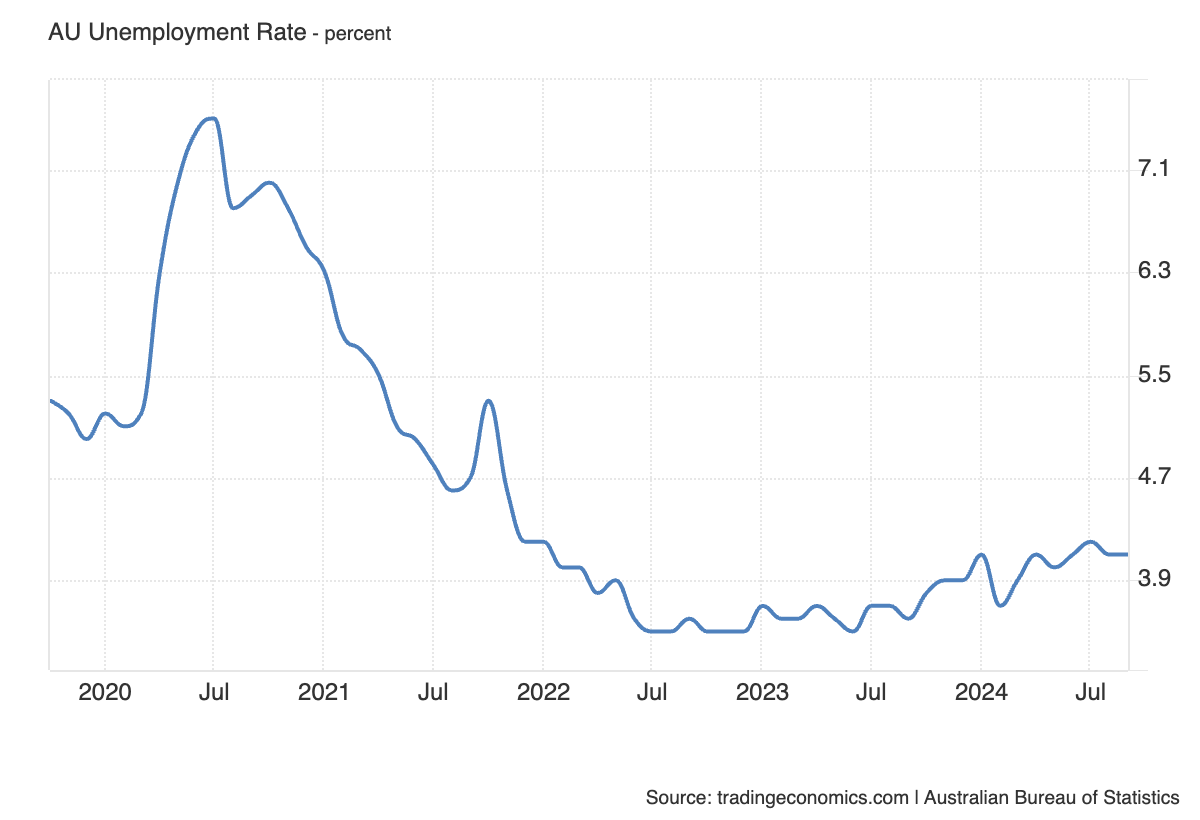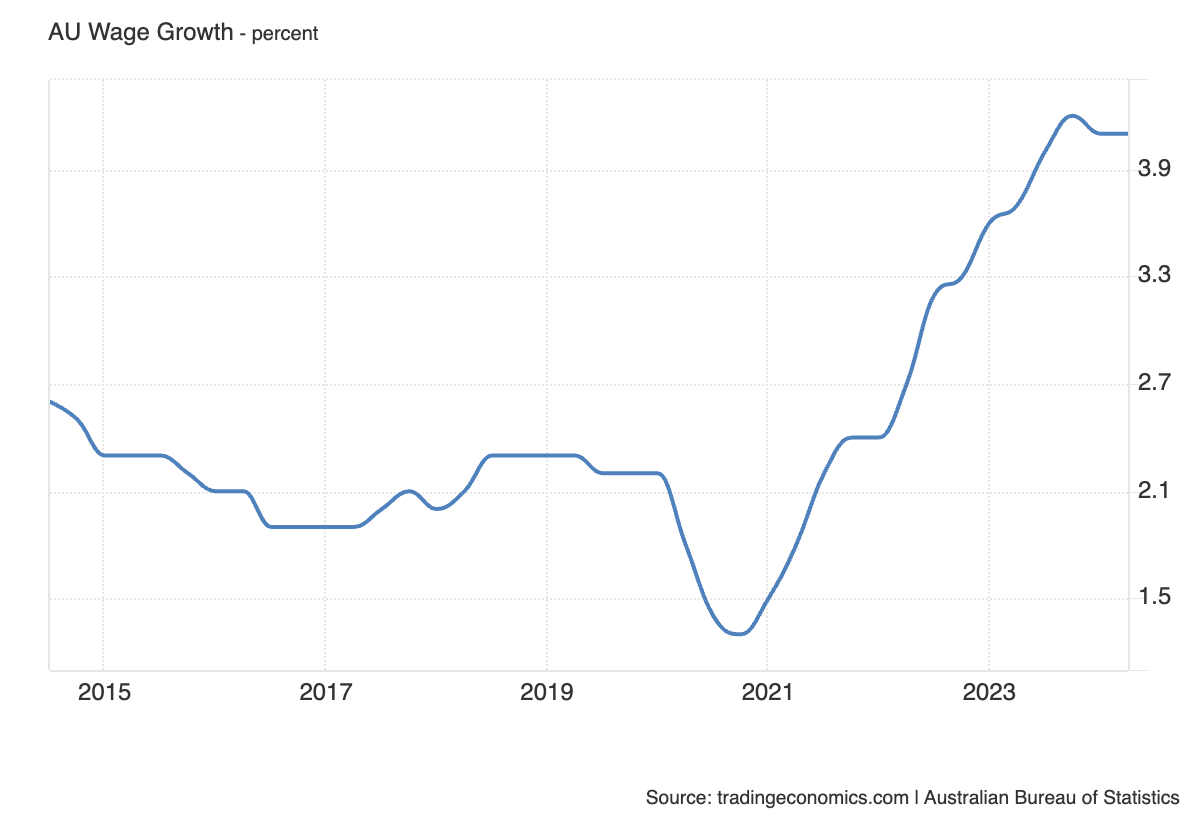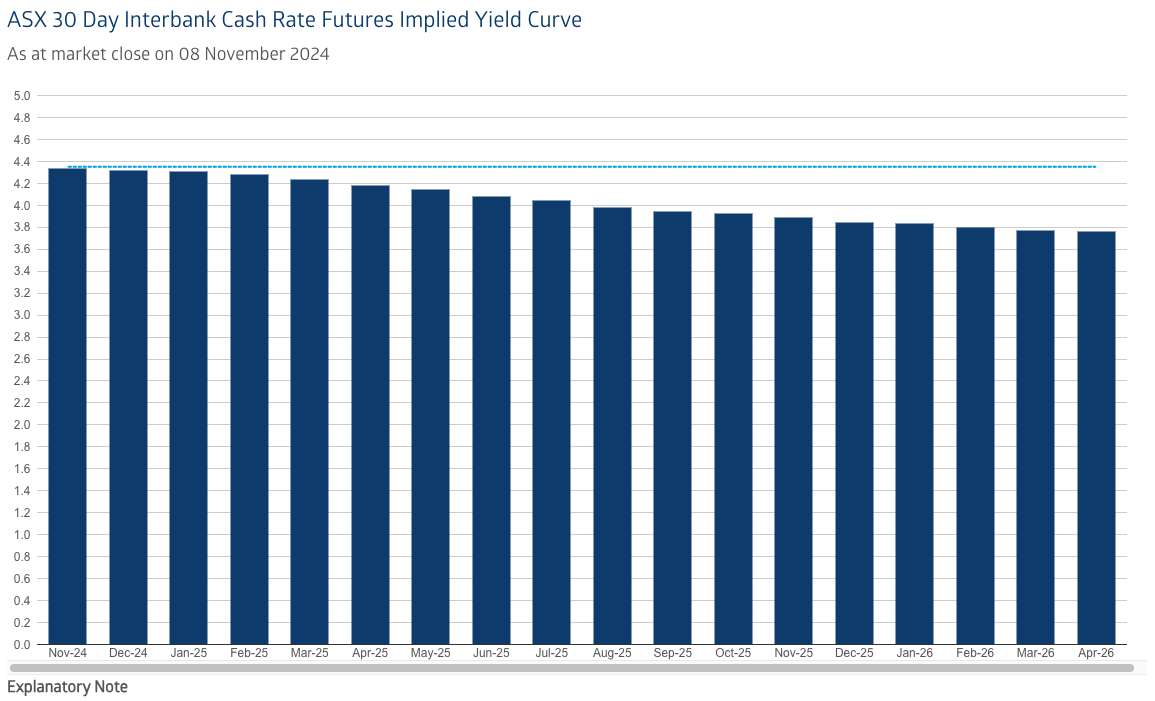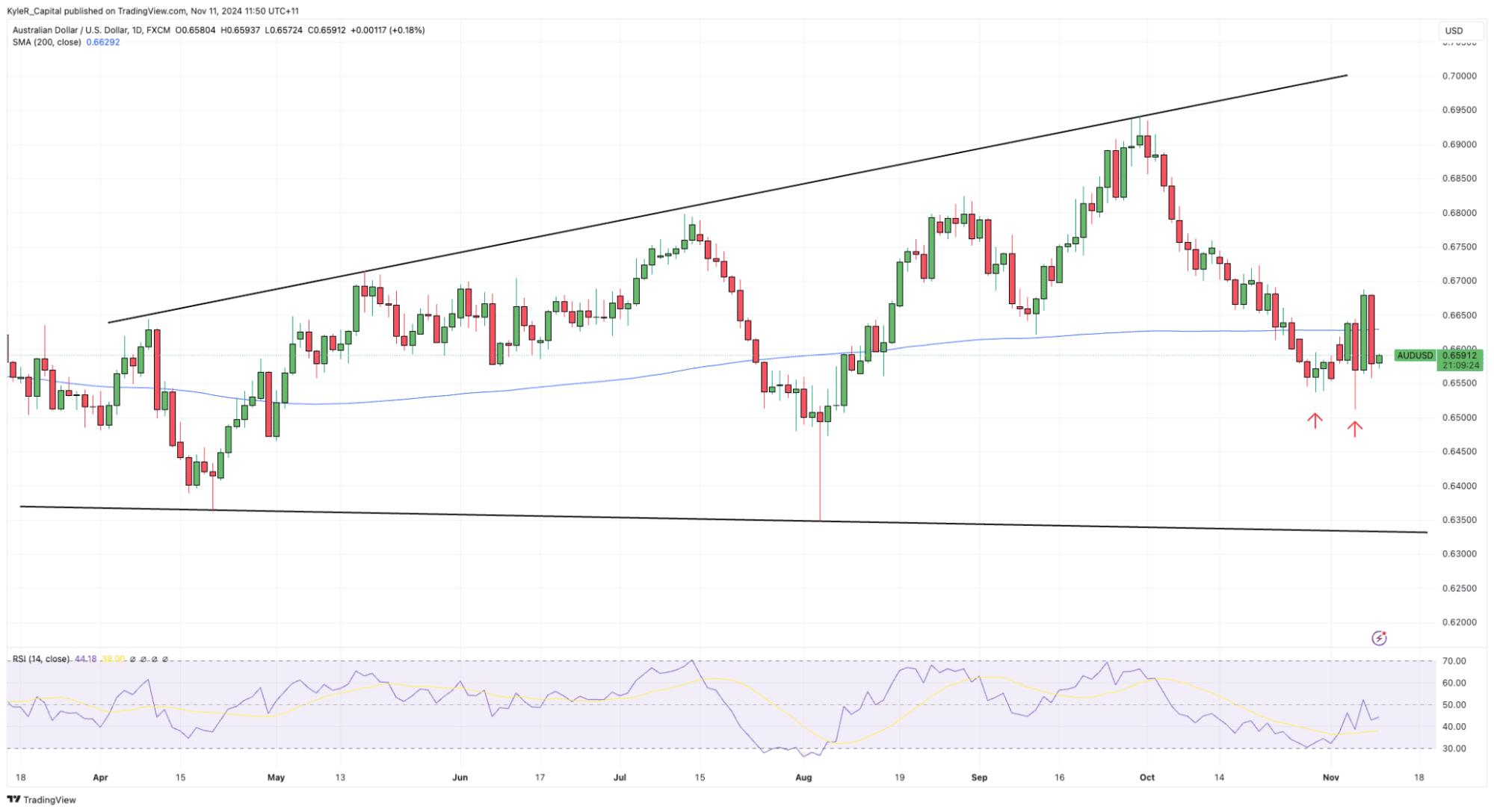Australian jobs data expected to point to solid labour market conditions
Australian labour market and wage data to reveal job growth resilience, shaping RBA rate cut expectations and impacting AUD amidst global economic shifts.
Australian labour force and Wage Price Index data are released this week, with the data expected to reveal relatively robust labour market conditions.
Economists predict steady jobless rate, moderating wage growth
Market economists expect this week’s data to reveal resilience in Australia’s labour market. According to data compiled by Bloomberg (below), economists predict that the Australian economy added 25,000 jobs in October to keep the unemployment rate steady at 4.1%. Meanwhile, they forecast that wage growth slowed last quarter to fall to 3.6% from 4.1%, despite an expected quarterly increase of 0.9%, as the impacts of base effects on the data lower the annual rate.

(Source: Bloomberg)
Owing to a combination of fundamentals and challenges predicting post-pandemic employment trends, economists have had difficulty estimating labour force data. The past six months of labour force figures have over shot expectations, with the unemployment rate grinding lower to 4.1%. The dynamic has led to the perception of strong labour demand even as the Australian economy teeters on the edge of recession.

(Source: Trading Economics)
Meanwhile, the Wage Price Index is very likely to show a clear peak in worker pay for this cycle. Although employment growth remains resilient, slowing wage pressures ought to add to the perception of easing upside risks to inflation as the labour market slowly loosens and the economy moves towards spare capacity.

(Source: Trading Economics)
Labour market data could shift expectations about timing of first RBA cut
The RBA stuck to its guns at its November meeting, keeping the cash rate on hold at 4.35% and maintaining its guidance that it is not “ruling anything in or out” for future policy. Cash rate futures continue to signal that the next move for the RBA will be a cut, with the curve implying that it will arrive by the middle of 2025. The curve has recently flatted and expectations for the timing of the first cut have been deferred recently owing to a combination of solid Australian labour market data, strength in the US economy and a subsequent paring back of Fed rate cut expectations, and the victory of Donald Trump in the US Presidential election.

(Source: ASX)
AUD/USD pulls back amidst soft Chinese growth and US Dollar strength
The AUD/USD has pulled back from its recent highs due to a combination of disappointment about the level of Chinese economic stimulus, resilient US labour data and an unwind of US Federal Reserve rate cut expectations, and the prospects of significant deficit spending under a Trump administration. The dynamic has simultaneously weighed on the AUD/USD because of relatively softer growth expectations for China and continued economic outperformance in the US.
From a technical point of view, the AUD/USD is fanning-out in a broadening formation, revealing an indecisive market in the bigger picture. In the short-term, momentum is neutral and the pair is trading sideway and without a clear trend. Dip buyers are emerging on sell-offs below 0.6550 while rallies are struggling to push all the way through the 66 handle.
Although the labour force and wage data is likely to have only a marginal impact on the AUD/USD, an upside surprise in employment or wage growth may push the pair higher, while a downside surprise could spark another pull back.

(Source: Trading View)
(Past performance is not a reliable indicator of future results)